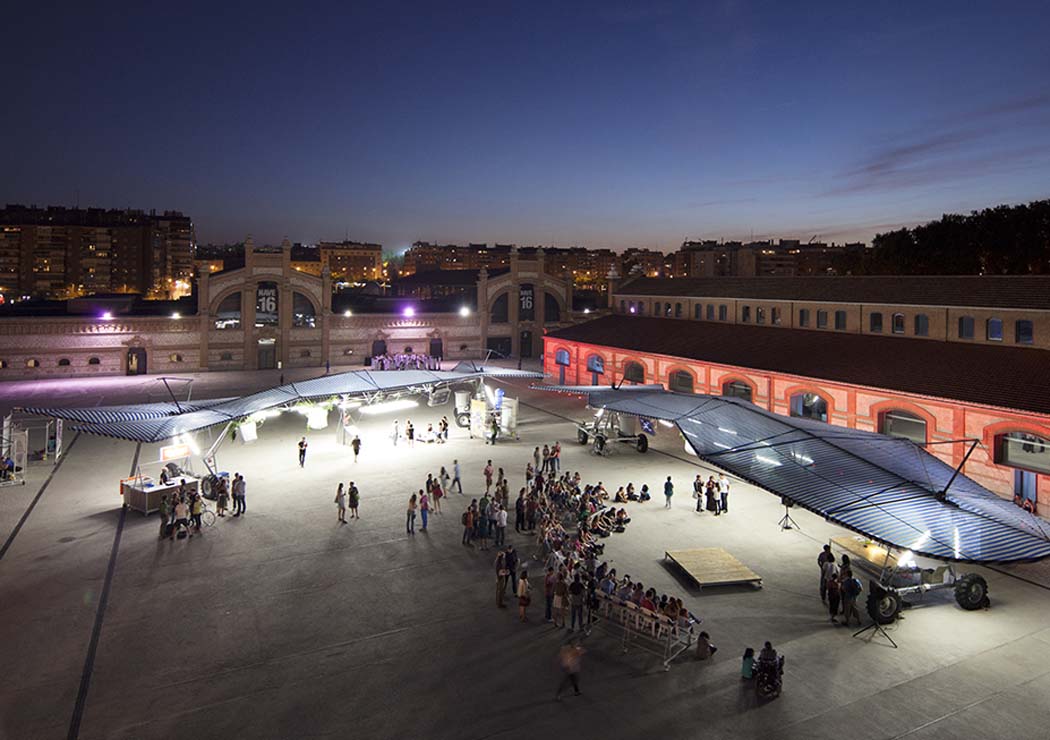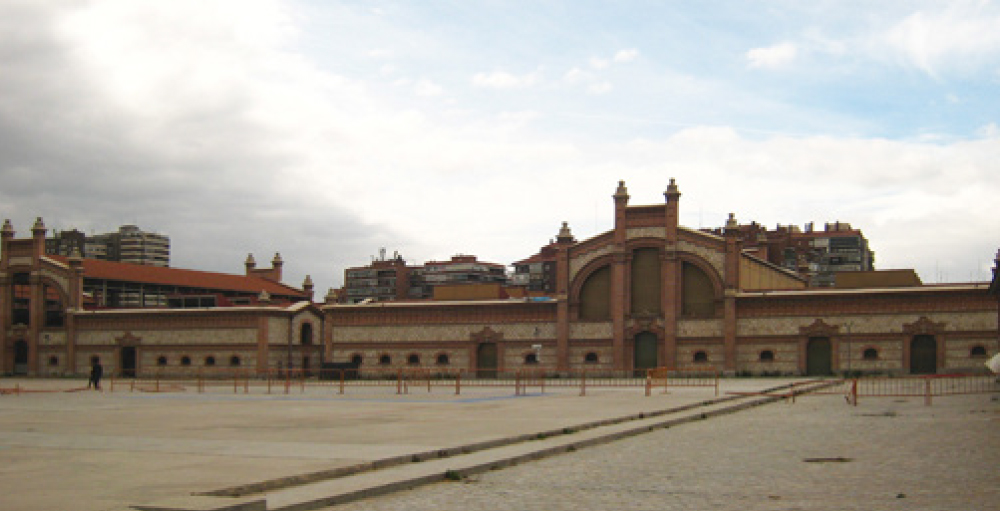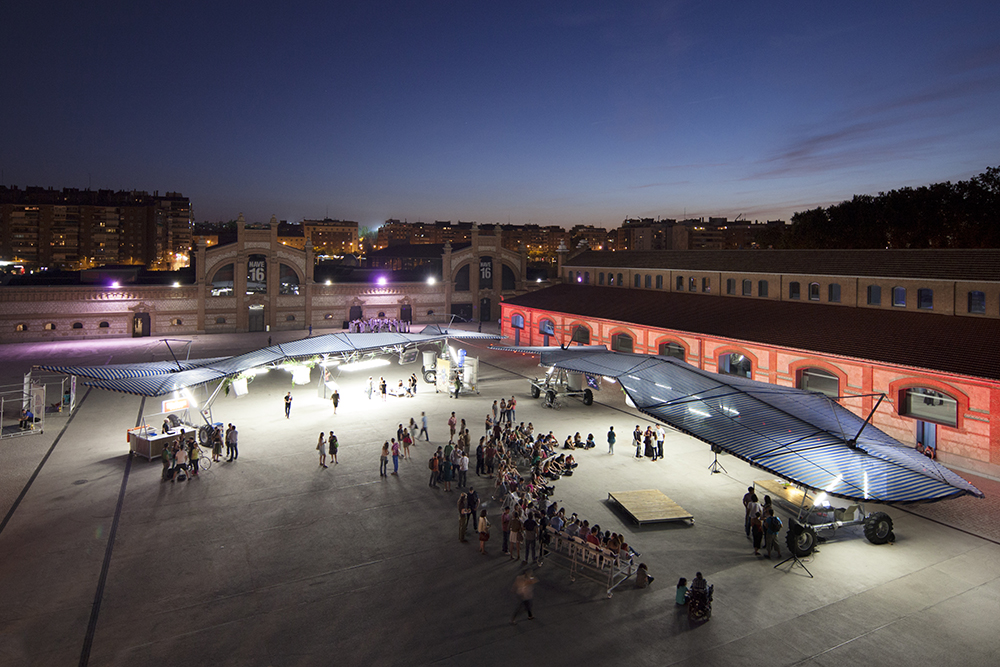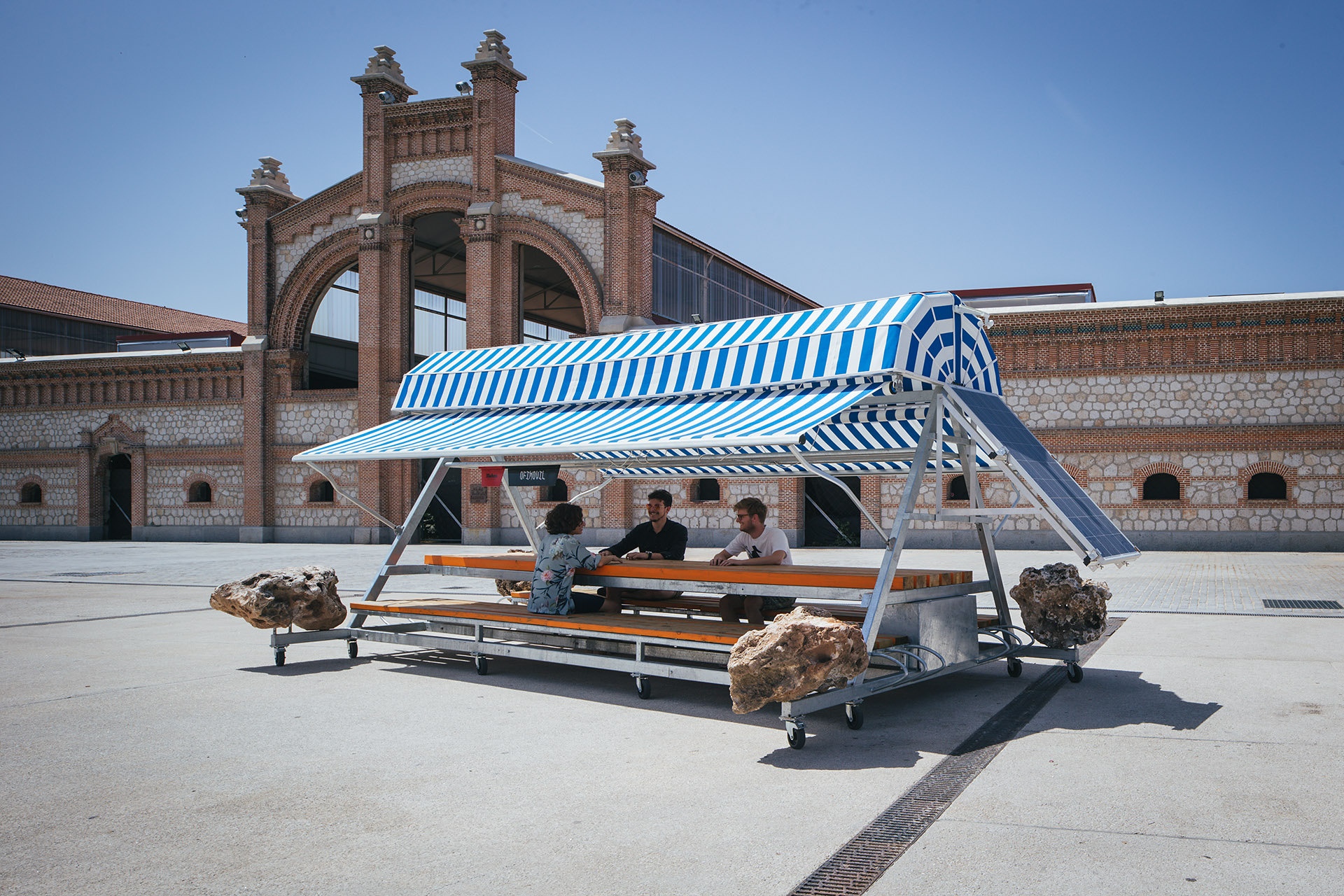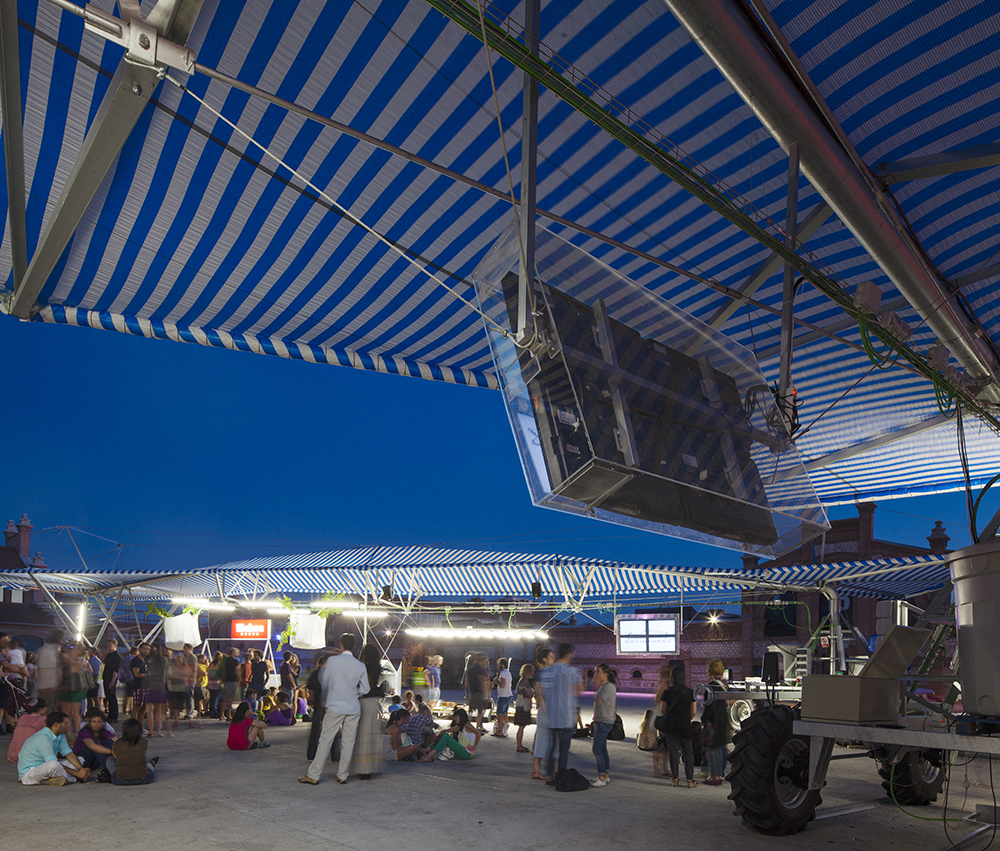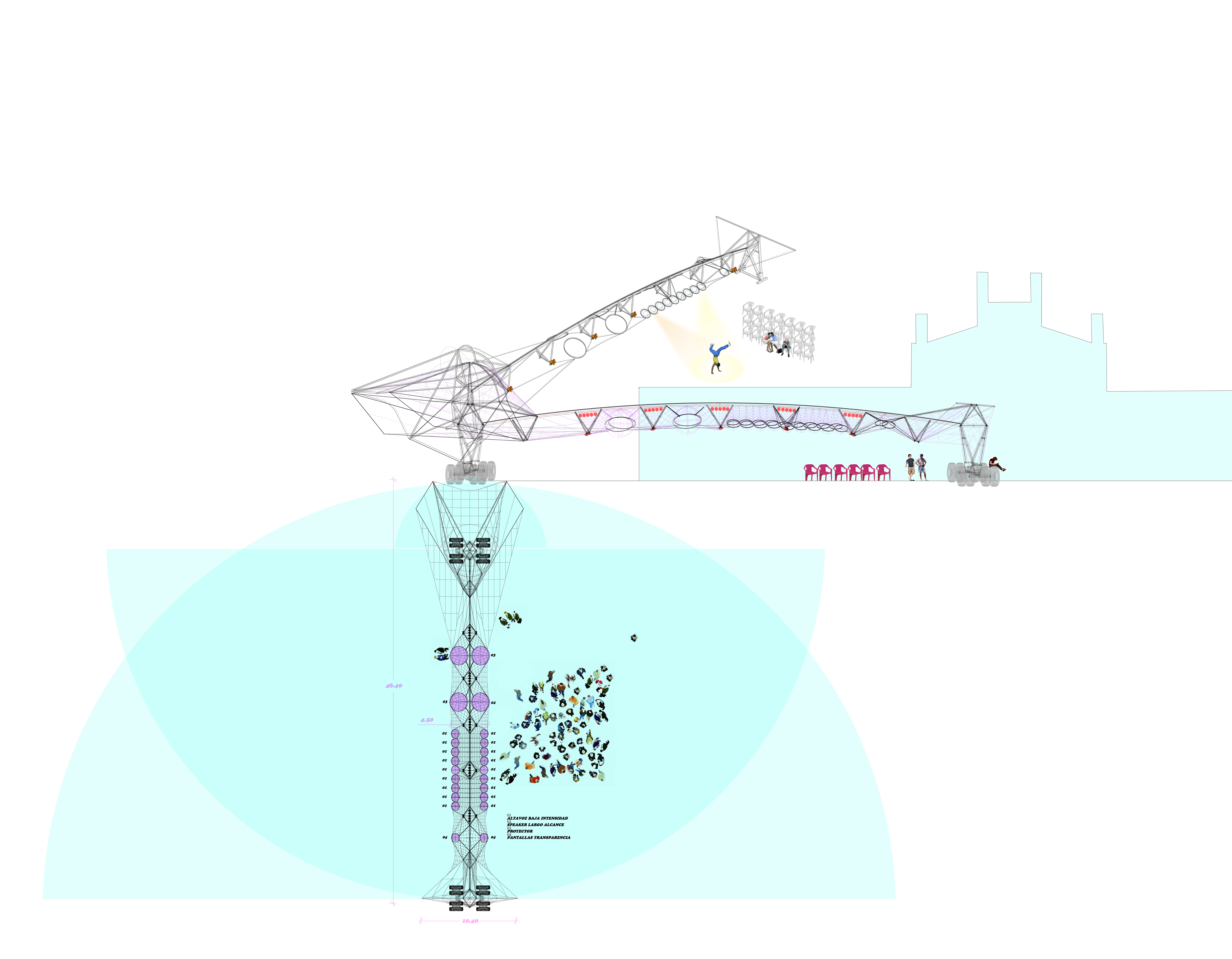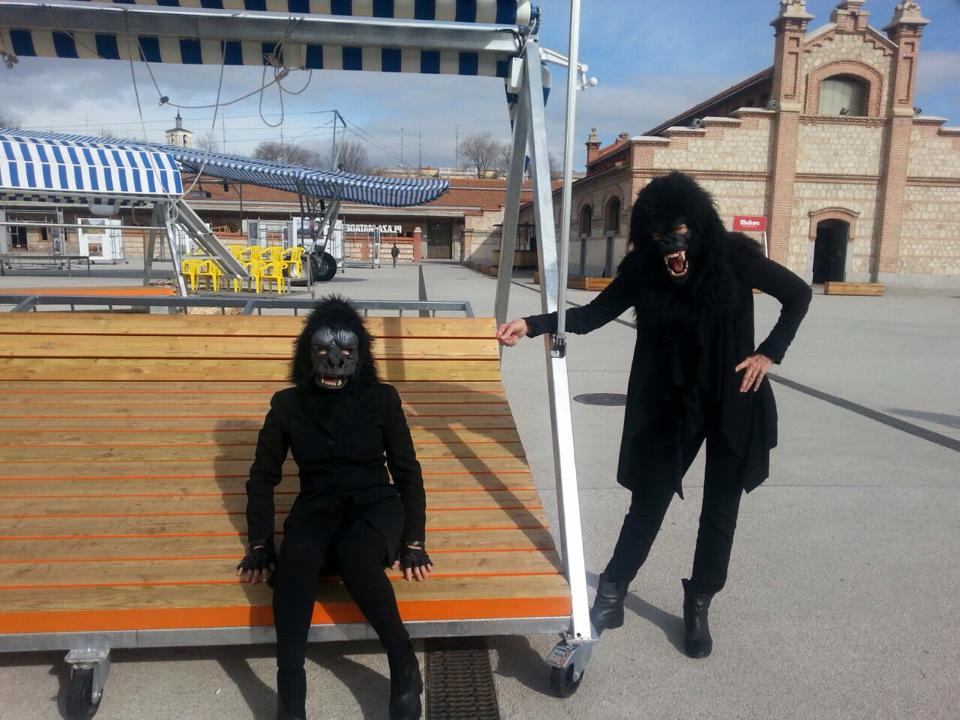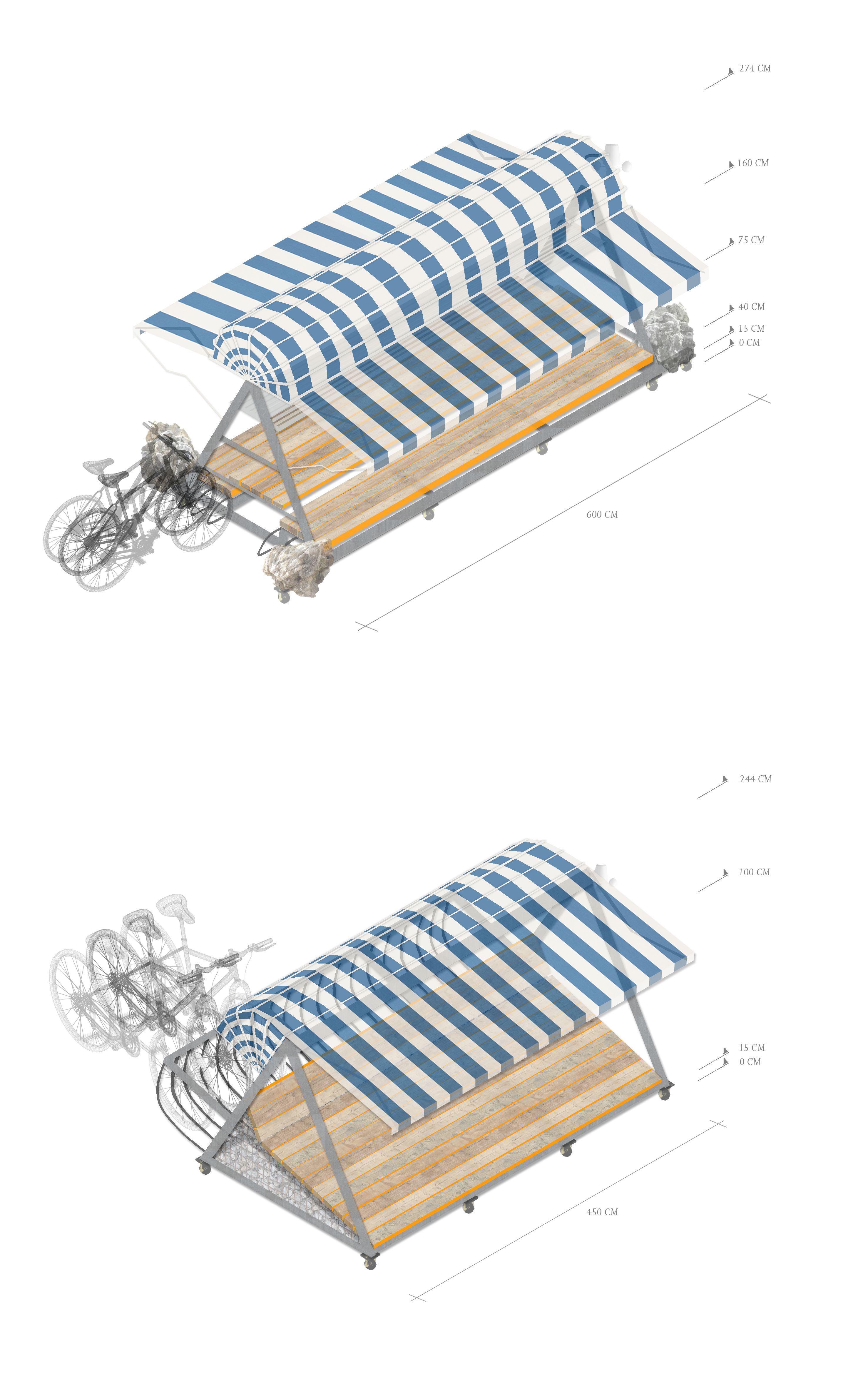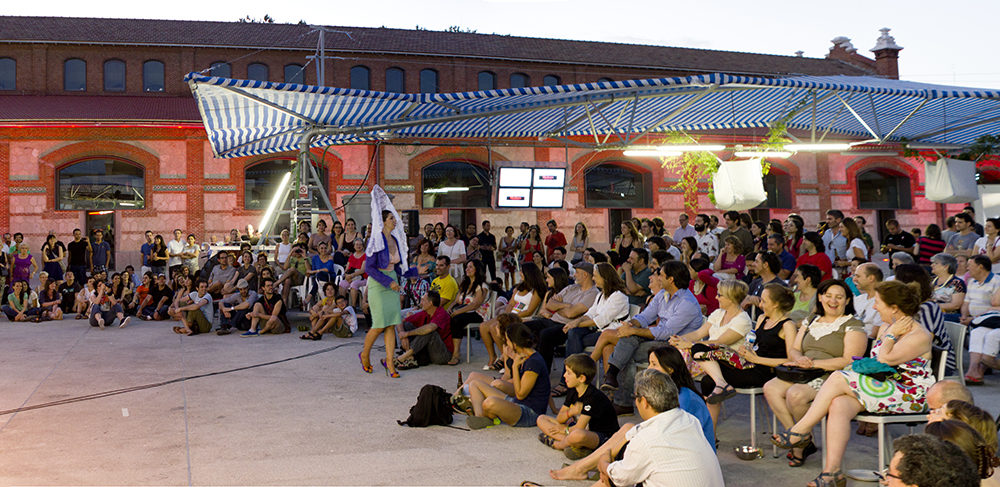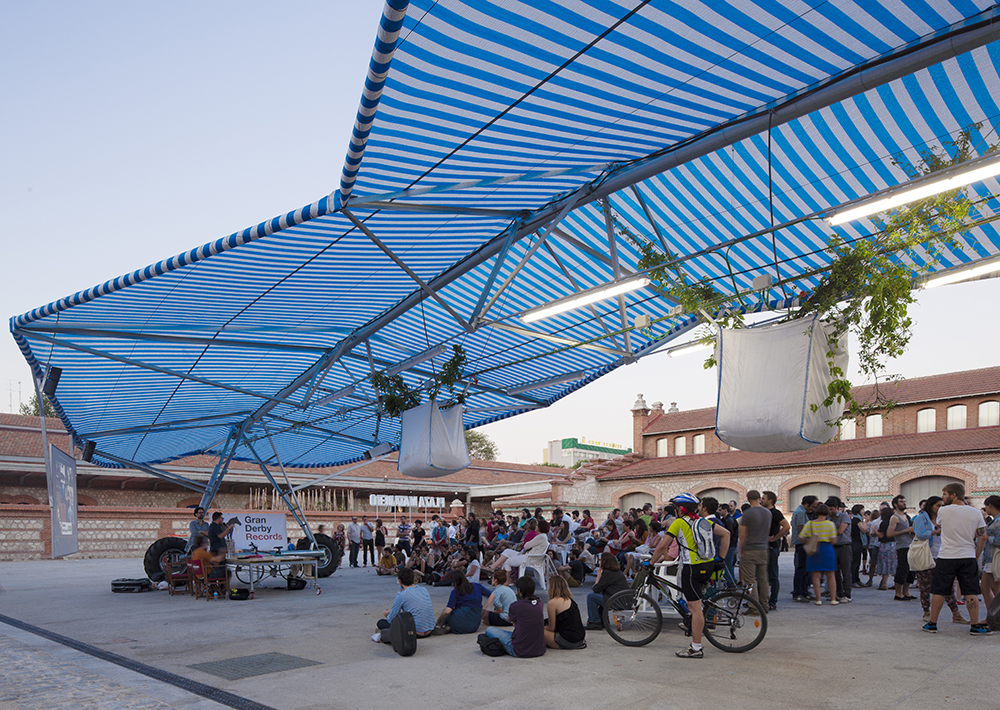Estado anterior
A principios del siglo XX, el Ayuntamiento de Madrid hizo construir a orillas del río Manzanares el Matadero Municipal de Legazpi, un complejo de doce hectáreas de superficie con cuarenta y ocho edificios de estilo neomudéjar destinados a la venta y la matanza de ganado. El conjunto, catalogado como patrimonio industrial protegido, cerró en 1996 y quedó abandonado durante unos años. Finalmente, como tantas otras instalaciones industriales europeas, fue reconvertido en un centro cultural que abriría sus puertas en 2007. Bautizado con el nombre de «Matadero Madrid», el equipamiento municipal reuniría una amplia gama de espacios destinados a acoger exposiciones temporales, fundaciones de promoción del diseño, centros de investigación, teatros, viveros de industrias creativas, filmotecas, hemerotecas audiovisuales o salas de conciertos. A pesar de esta efervescencia de actividades, la enormidad del complejo y una cierta falta de compromiso con su mantenimiento por parte del consistorio hacían que, a veces, pareciera vacío y descuidado. La abundancia de patios desolados y sin sombras hacía patente la falta de concurrencia. Paradójicamente, el vecindario de Legazpi se caracteriza por tener una gran proporción de población envejecida y con necesidades de interacción social y de familias de origen latinoamericano y norteafricano, muy propensas a hacer un uso intensivo de los espacios exteriores.Objeto de la intervención
En el año 2012, el Ayuntamiento de Madrid convocó un concurso de ideas para dinamizar los patios del Matadero con nuevas actividades. La convocatoria subrayaba la voluntad de atraer la vida vecinal a un equipamiento de ciudad poco arraigado en el territorio inmediato. Pero, aparte de atraer al vecindario, había que empoderarlo para que se hiciera suyos los espacios del modo que le pareciera más conveniente. La propuesta ganadora apostaba por inyectar en el espacio público actividades domésticas que normalmente tienen lugar en el ámbito privado.Descripción
Titulada «Escaravox», la intervención despliega en los patios del Matadero una serie de dispositivos móviles que permiten apropiarse del espacio de formas muy diversas. Los dispositivos, que han costado unos cien mil euros, están fabricados a partir del reciclaje de productos industriales como estructuras de riego agrícola, placas fotovoltaicas, carritos de supermercado, lonas sintéticas para cultivos, sacos de escombros para la construcción o sillas de plástico del ámbito de la restauración, todos ellos económicos y de fácil mantenimiento. Los diferentes dispositivos se han bautizado con nombres variados que describen su uso. El «Escaravox Lux» y el «Escaravox Sonum» son carpas de cuarenta y dos metros de longitud provistas de grandes ruedas neumáticas que permiten modificar su posición y orientación. La primera está dotada de ordenadores, conexión a Internet y sistemas audiovisuales para hacer grandes proyecciones de vídeo, mientras que la segunda está equipada con sistemas de luz y sonido para acoger representaciones y conciertos. Por su parte, el «Offimobil» es una carpa destinada al cotrabajo y está equipada con espacios de almacenamiento, mesas de reuniones y de trabajo, conexión a Internet y suministro eléctrico a través de placas fotovoltaicas. El «Siestero» es una carpa pensada para el descanso. Ofrece superficies para tumbarse, protegidas del sol y la lluvia y adaptadas tanto a la siesta de los niños como al reposo de personas mayores o convalecientes. Por último, una constelación de piezas de mobiliario fácilmente adaptables a diferentes usos complementa los demás dispositivos. Son, entre otros, contenedores con sillas de plástico, mesas polivalentes que se pueden usar para montar la tarima de un escenario o bancos que ofrecen planos de trabajo. Dos agentes sociales contratados por el Ayuntamiento trabajan como facilitadores y dinamizadores, aunque la mayoría de los dispositivos se pueden usar y manipular sin necesidad de mediación oficial.Valoración
El poder de convocatoria del «Escaravox» sobre los vecinos se hace patente a través del libro de visitas. Gracias a esta instalación, los patios del Matadero ya han visto pasar cerca de cien mil personas y más de mil ochocientos colectivos de la sociedad civil organizada. Su capacidad de adaptarse a las múltiples demandas de los usuarios se refleja en la gran diversidad de actos programados: sesiones de cotrabajo, asambleas vecinales, reuniones operativas, actos políticos, conferencias y lecturas, ensayos, representaciones teatrales, actuaciones musicales, verbenas o encuentros deportivos. Todas estas actividades han tenido lugar sin necesidad de permisos burocráticos y casi sin ninguna intervención municipal. Además, contrariamente a los diseños cerrados, relamidos y afectados que suelen poblar nuestros espacios públicos, los objetos del «Escaravox» son cercanos, lúdicos y populares, lo que facilita la apropiación por parte del vecindario. De alguna manera, los vecinos de Legazpi se han convertido en hackers de unos dispositivos de código abierto, nunca acabados y siempre en periodo de pruebas. Como la versión beta de un producto innovador.David Bravo
Traducción de Maria Llopis
[Última actualización: 29/06/2023]


